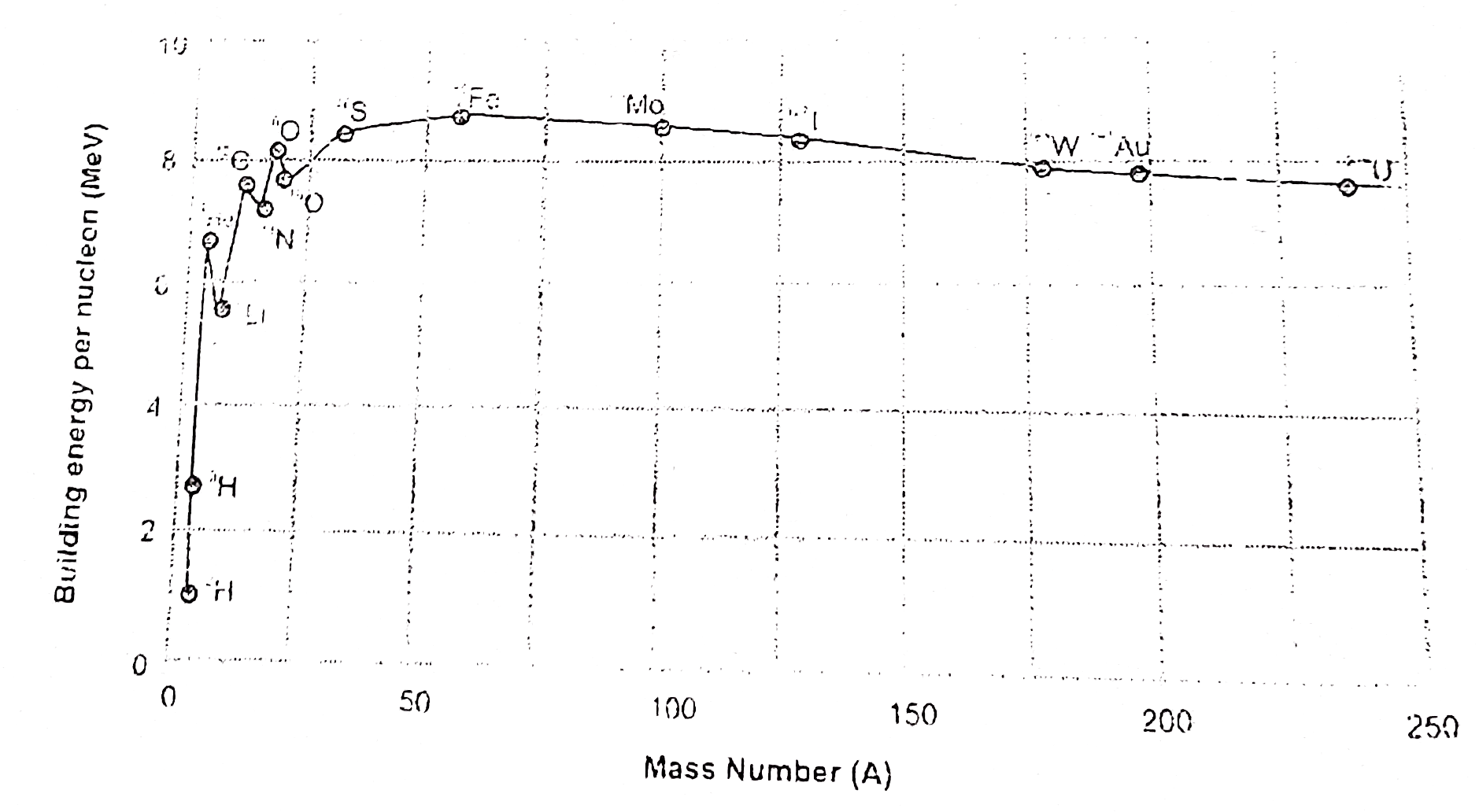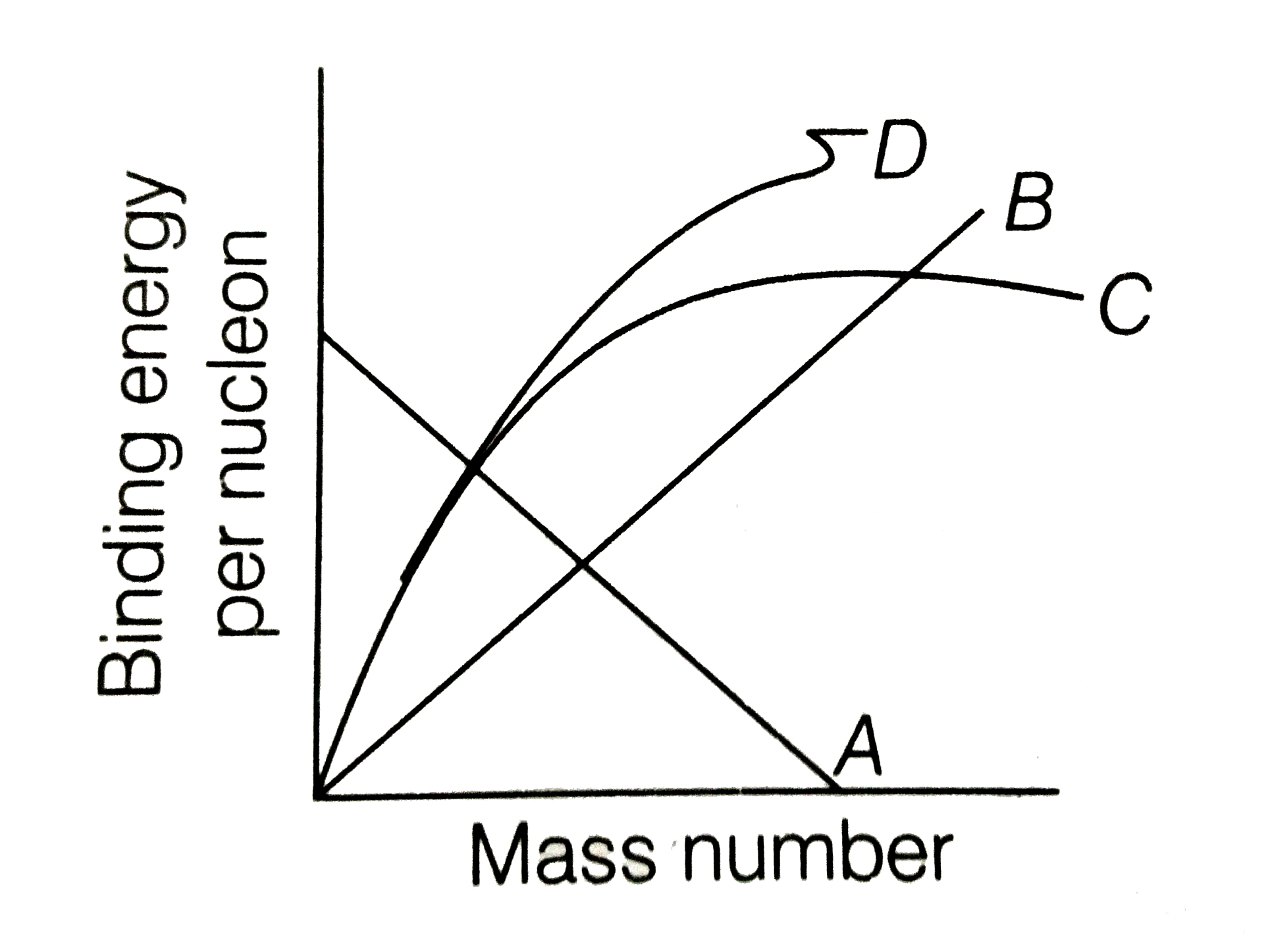(i) What characteristic property of nuclear force explains the constancy of binding energy per nucleon (BE/A) in the range of mass number ‘A’ lying 30<A<170?
(ii) Show that the density of nucleus over a wide range of nuclei is constant-independent of mass number A.
(i) Constancy of binding energy per nucleon in the range of mass number ‘A’ ranging from 30 to 170 can be explained on the basis of short ranged nature of nuclear force.
Inside a sufficiently large nucleon a particular nucleon is under the influence of only some of its neighbours which come within the range of the nuclear force. If a nucleon can have a maximum of p neighbours within the range of nuclear force, its binding energy would be proportional to p or the binding energy of the nucleon will be pk where k is a constant having the dimensions of energy.
Thus, it is clear that the binding energy per nucleon is a constant and equal to pk.
Topper's Solved these Questions
- NUCLEIBOOK - U-LIKE SERIESCHAPTER - NUCLEIEXERCISE - Long Answer Question-II
2 Videos
- NUCLEIBOOK - U-LIKE SERIESCHAPTER - NUCLEIEXERCISE - Self Assessment Test
10 Videos
- NUCLEIBOOK - U-LIKE SERIESCHAPTER - NUCLEIEXERCISE - Short Answer Questions
28 Videos
- MOVING CHARGES AND MAGNETISM BOOK - U-LIKE SERIESCHAPTER - MOVING CHARGES AND MAGNETISM EXERCISE - SELF ASSESSMENT TEST (SECTION D)
1 Videos
- RAY OPTICS AND OPTICAL INSTRUMENTSBOOK - U-LIKE SERIESCHAPTER - RAY OPTICS AND OPTICAL INSTRUMENTSEXERCISE - SELF ASSESSMENT TEST (SECTION B)
3 Videos
Similar Questions
(a) Explain the processes of nuclear fission and nuclear fusion by using the plot of binding energy per nucleon (BE/A) versus the mass number A.
(b) A radioactive isotope has a hald -life of 10 years. How long will it take for the activity to reduce to 3.125%.
View SolutionState two characteristics of nuclear force. Why does the binding energy per nucleon decrease with increase in mass number for heavy nuclei like 235U ?
View Solution
Knowledge Check
As the mass number A increases, the binding energy per nucleon in a nucleus.
AincreasesBdecreasesCremains the sameDvaries in a way that depends on the actual value of AThe binding energy per nucleon, for nuclei with atomic mass number A>100, decreases with A.
The nuclear forces are weak for heavier nuclei.AIf both assertion and reason are true and reason is the correct explanation of assertion.BIf both assertion and reason are true but reason is not the correct explanation of assertion.CIf assertion is true but reason is falseDIf assertion is false but reason is true.The binding energy per nucleon, for nuclei with atomic mass number A>100, decreases with A.
The nuclear forces are weak for heavier nuclei.AIf both assertion and reason are true and the reason is the correct explanation of the assertionBIf both assertion and reason are true but reason is not the correct explanantion of the assertionCIf assertion is true but reason is falseDIf the assertion and reason both are false
Draw the graph showing thervariation of binding energy per nucleon with mass number. Give therason for the decrease of binding energy per nucleon for nuclei with high mass numbers.

The binding energy per nucleon for nuclei with high mass number is low due to the large coulomb repulsion between the protons inside these nuclei.
View SolutionAs the mass number A increases, the binding energy per nucleon in a nucleus.
View SolutionAssertion The binding energy per nucleon, for nuclei with atomic mass number A>100, decreases with A.
Reason The nuclear forces are weak for heavier nuclei.
View SolutionVARIATION OF BINDING ENERGY OF PER NUCLEON WITH MASS NUMBER
View SolutionBinding energy per nucleon plot against the mass number for stable nuclei is show in the figure. Which curve is correct ?

View Solution
